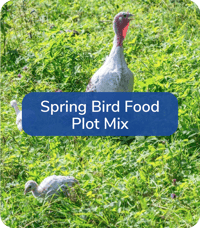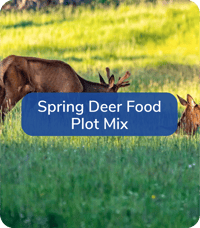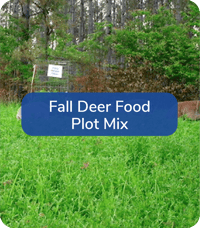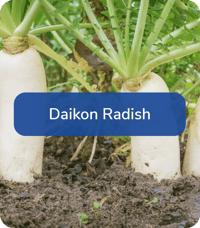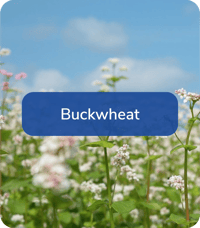Food plots serve as a supplementary food source for deer, birds, and other wildlife. Planting food plot mix on your property requires an investment of time and resources but can be well worth the effort as you prepare to enjoy a successful hunting season. Being strategic in your planning and planting can help you create a welcoming and nutritious environment to wildlife.
Below, we're answering common food plot questions to help you pick the right food plot mix for your goals to see the best results this season.
As you begin planning your food plot, you’ll want to search for the seed mix that will attract the most game and wildlife to your property. There are several types of food plot mixes for different wildlife, regions, and land types. Some of the most common food plot varieties include clover, alfalfa, legumes, brassicas, and corn.
One of the most important things when planting on your land is purchasing high-quality seed from a trusted and reputable seed company. At Curtis and Curtis, we source and process seed of only the highest quality to ensure every product meets state regulations and delivers great results.
Planning your food plot
Once you’ve decided which food plot you’ll be planting this season, it’s time to get started! The goal is to make your land desirable to deer, birds, or any other type of wildlife you wish to attract. Your strategy will need to include your budget, available land, hunting goals, and other considerations. If you’re planning on planting multiple food plots, you’ll need to be strategic in your placement to be successful.
Here are a few things to consider before selecting a spot:
- Can wildlife easily access this area?
- Does grass grow readily in this space?
- Does this area receive enough sunlight each day?
Next, you’ll need to prepare your land, sow your seeds, and prepare for a successful hunting season.
Food plot FAQs
Do I have enough acreage to plant food plots?
Depending on your goals for hunting season, you can fit a food plot into nearly any sized property. While a ½ acre food plot may not attract as many deer or other wildlife as a larger food plot would, it can still bring in a fair amount of game. Just remember to keep your expectations realistic!
Do food plots guarantee quick results?
While planting food plots is a great way to increase your chances of drawing in herds of deer or birds, it’s not a guaranteed quick fix. Like most plants, strategic planning and hard work is required to see best results from your food plot.
Do I need special equipment to plant a food plot?
Depending on the condition of your land, special equipment may make the clearing and planting process easier, but it’s not essential. Basic equipment and some dedication is all it takes to plant your food plot.
Can I only plant a food plot in the spring?
One misconception when it comes to food plots is that you can only plant in the spring. This is not the case! There are a variety of different food plot mixes that can be planted in the spring, summer, and fall. In fact, some of the most successful food plots are planted in the spring, mid summer, and again in the fall to create a great food plot year-round for wildlife on your property.
Is my soil healthy enough for a food plot?
We’ve seen food plots have great success on a wide variety of soil types and conditions. Before planting, test your soil and then apply fertilizer to adjust it to the seed’s needs. If you need expert consulting, our team is here to help you get the most out of your seed investment.
Let's get started!
Grow a successful food plot with the Cultivation Experts on your side! We have plenty of helpful resources and over 65 years of industry experience to provide helpful consulting throughout the entire process. For quality results, use quality seeds from the start!


